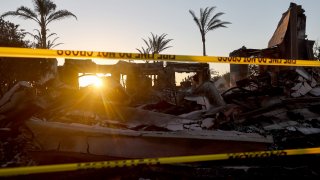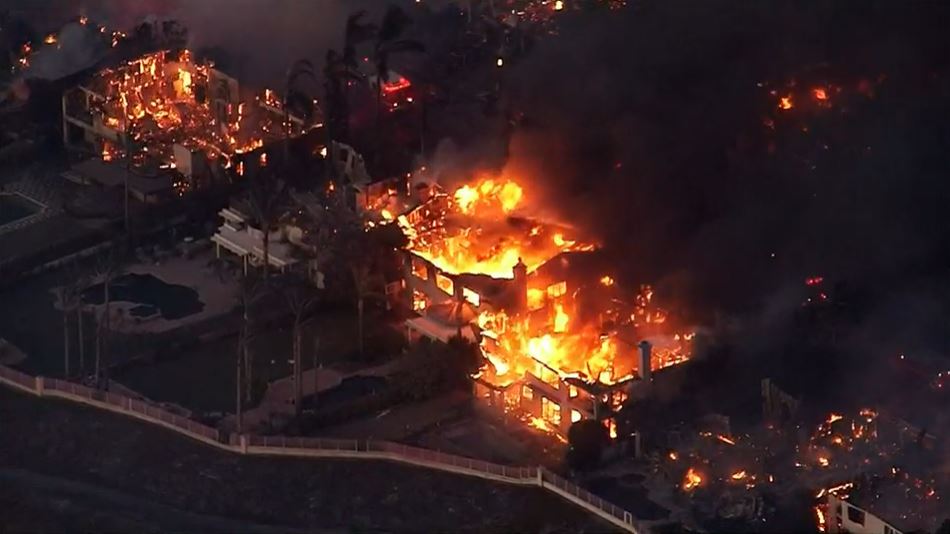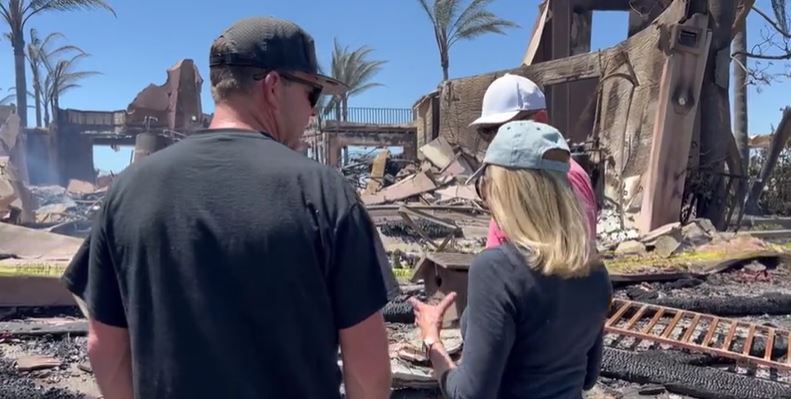
As families from 900 homes remain evacuated and homes and cars are melted down to the chassis due to the Coastal Fire in Laguna Niguel, some may be checking on wildfire insurance coverage of their homes and wondering if there are other options, like the California FAIR Plan.
As of Friday, the 200-acre blaze consumed some 20 homes, and left 11 more damaged, with just 25% of the fire contained.
A UC Davis study said 2020 was the first year that burned areas across the state of California reached burn rates seen before the 1800s. Some 4.3 million acres burned in 2020. In the 1800s, 3-4 million acres would burn in an average year, the study said.
Ravenous wildfires have been getting worse in California, too. Within the past five years, 12 fires have burned a "Connecticut-sized amount of land," NASA and CalFire reported.
Get Southern California news, weather forecasts and entertainment stories to your inbox. Sign up for NBC LA newsletters.
Wildfire Insurance
First thing’s first: anyone who is in the line of fire or just wants to make sure their home is covered should review their wildfire insurance.
Navigating the process of filing a claim can be stressful and confusing.
With an insurance claim, speed is key.
The faster you file, the quicker you get paid.
Document your losses
Insurance companies will want to see proof of damages to your home and belongings.
Take pictures of everything.
If you have receipts for recent purchases, keep them.
Here’s how to prepare before a fire comes sweeping through your neighborhood
Before disaster strikes, take photos of your belongings in every room in your home, and keep those images somewhere safe. In case of fire, you can prove to the insurance company what you’ve lost.
Make sure you’re adequately covered.
Review your homeowners insurance policy.
Nicole Ganley, who works with an insurance industry trade group, says many people are under-insured. There’s a lumber shortage, thanks to mills that were closed or put on pause during the pandemic. Adding to that is the demand for lumber created by other natural disasters. These factors have caused the price of wood to skyrocket. It’s up 400%, Ganley says.
That means rebuilding your home could now cost much more than your insurance will cover. So you’ll either have to shell out thousands of dollars in cash, or rebuild a smaller house.
“Instead of building back your 4-3, you have to build back a 3-2. And you don’t want to do that,” Ganley said.
She says to call your insurance agent and ask about “extended replacement cost coverage.”
Extended replacement cost coverage is going to give you 150% of coverage. It’s going to give you more to cover that demand surge, she said.
She also suggests tweaking your insurance policy so that it adjusts to inflation and building code updates.
Ganley concedes these policy changes will cost you a little more, but she says it’s a small price to pay for peace of mind.
Ganley says a 10 minute phone call to your agent can make all the difference between recovering or not being able to rebuild that house you’ve invested everything in.
But what happens when you don’t have adequate insurance? Or any at all because your insurer dropped you?
Some policies for homes in fire-prone areas are not being renewed.
That’s where the California FAIR Plan comes in.
California FAIR Plan
The California FAIR Plan is not a state agency, nor a public entity. If a traditional insurer will not insure a high-risk property, the FAIR Plan will offer basic coverage, and is described as a temporary safety net. Temporary is the key word. The plan will offer coverage until the property is insurable by a traditional company.
“The FAIR Plan is a syndicated fire insurance pool comprised of all insurers licensed to conduct property/casualty business in California,” the website says.
But don’t expect low prices. The coverage will reflect the risk, and so will the prices. The policies tend to cover only the most catastrophic impacts of a fire as well.
“The number of consumers forced to obtain a policy from the FAIR Plan because they could not find an insurance company willing to write them coverage increased by 49,049 policies in 2020 to 241,466 new and renewed policies,” the Department of Insurance said in a news release.
How to Apply
First in the process, you'll find a broker who will:
- Find available coverage with a traditional insurance company
- Determine your property insurance coverage needs
- Estimate the fair market value of your home
- Handle changes to your policy
- Answer your questions
You do no have to pay the broker.
Next, the broker will determine if you are eligible.
The last step is finding coverage under the FAIR Plan.
Click here to learn more about applying.
Christine Roher and Randy Mac contributed to this article.




